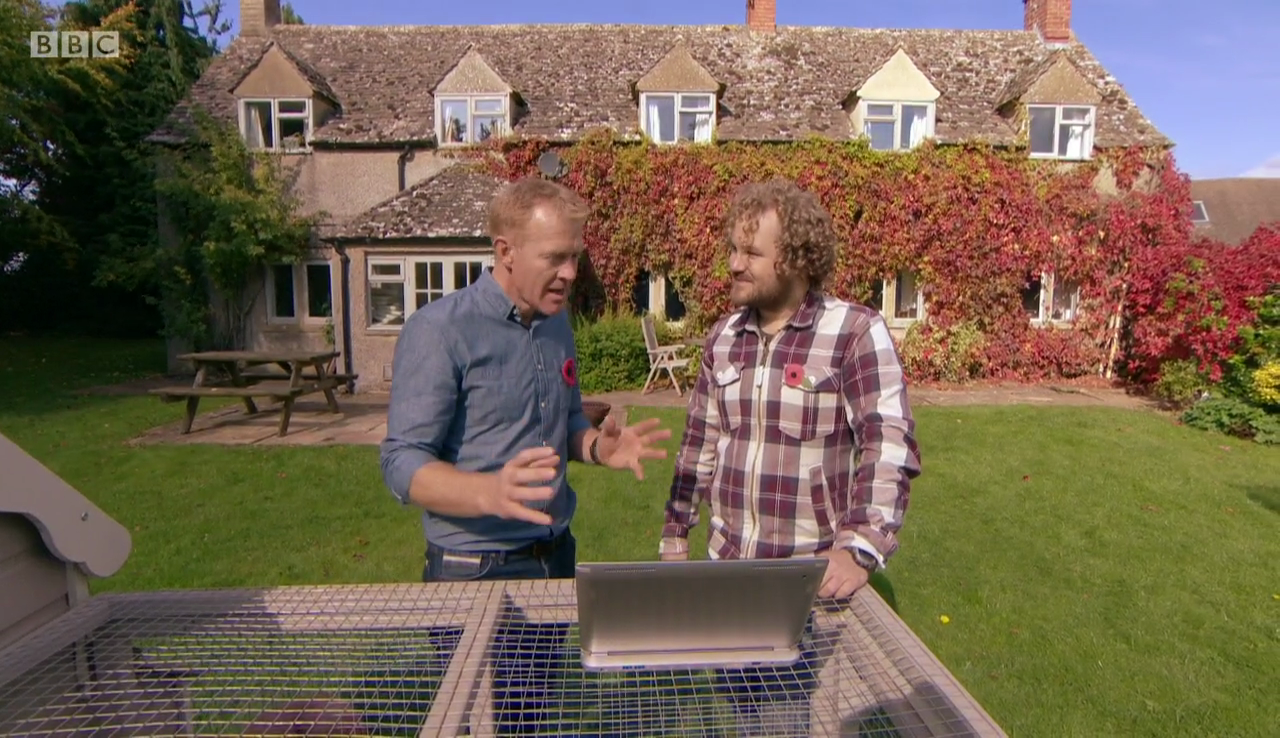I’m due to appear on BBC One’s Countryfile this Sunday (25th, 18:15).
We filmed a couple of weeks ago on Adam Henson’s farm in the Cotswolds, where we discussed how different animals on the farm see the world. Most mammals on the farm are dichromats with eyes sensitive to blue and yellow colours. So although people often call them “colour-blind” they can actually see the world in a range of colours. However, most humans are trichromats, as our primate ancestors evolved a split in their yellow sensor, allowing them to distinguish better between red and green colours (which is handy if you’re a monkey searching for fruit).

Next we discussed bee vision, and how they are sensitive to ultraviolet (UV) light. This is a section of the spectrum that we’re completely blind to, but many flowers use UV reflective signals to attract and guide pollinators to the centres of flowers.

We also briefly discussed bird vision using a chicken to help us. Birds are tetrachromats (with eyes sensitive to four colours), roughly equivalent to human red, green and blue, plus ultraviolet. In addition, birds have tiny oil-droplets in their eyes that tune the colour sensitivity of their eyes, giving them far better colour vision than us humans. We can’t imagine what it’s like to see the world with a fourth sensor.

UPDATE: Apparently this broadcast of Countryfile had viewing figures of 7.21 million. Only “Strictly Come Dancing” (BBC One) “The Apprentice” (BBC One), and “Downton Abbey” (ITV) received higher viewing figures in the UK that week (Source: Broadcasting Audience Research Board).





I am Emma’s cousin, just seen you on Countryfile!!!!